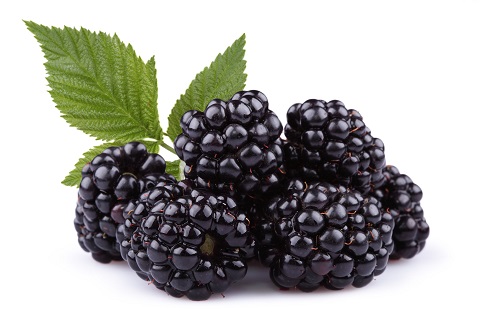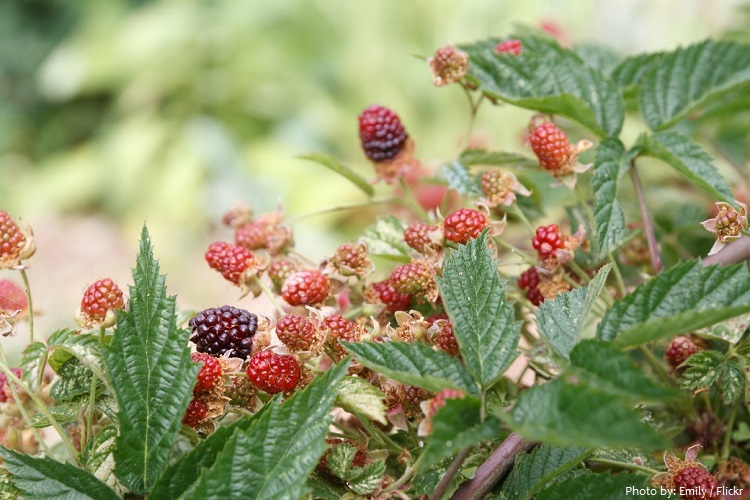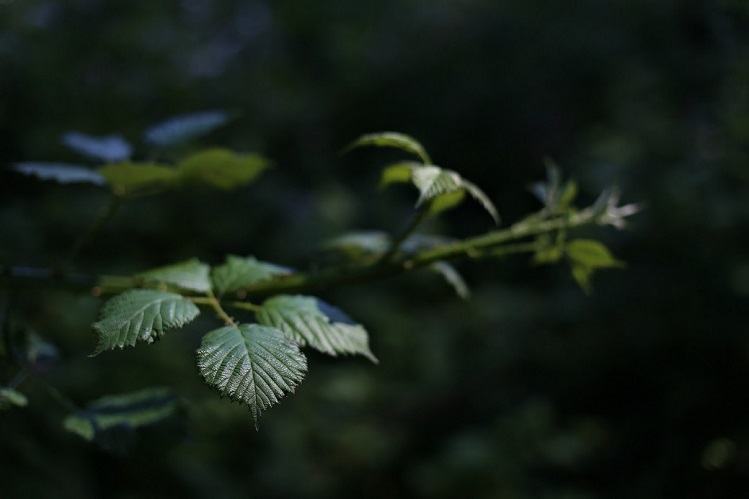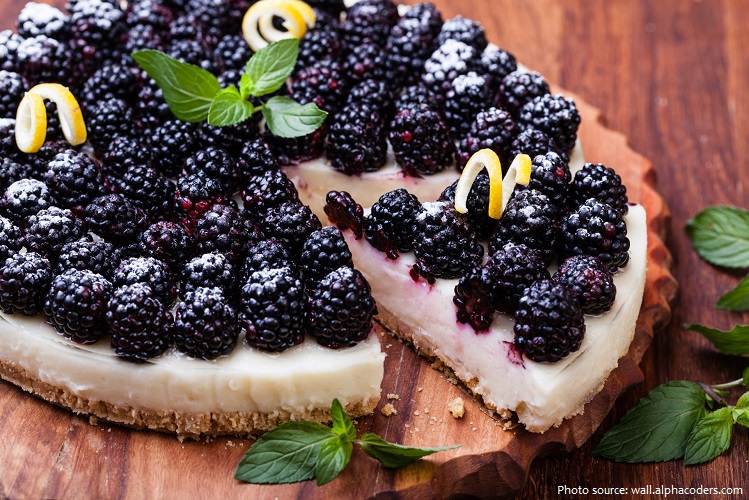The blackberry is an edible fruit produced by many species in the Rubus genus in the Rosaceae family.
There are around 375 species of blackberry, which are found in almost all parts of the world.
Blackberries were perceived by the ancient cultures as being a wild plant, and historical accounts for a backyard culture of blackberry bushes are few.
The Greeks used the blackberry as a remedy for Gout, and the Romans made a tea from the leaves of the blackberry plant to treat various illnesses.
Much of the first modern blackberry variety development was done in the United States, beginning with Judge Logan of California in 1880, and the release and introduction of the Loganberry.
Blackberries are perennial plants which typically bear biennial stems from the perennial root system.
In its first year, a new stem grows vigorously to its full length of 3-6 meters (10-20 feet), arching or trailing along the ground and bearing large palmately compound leaves with five or seven leaflets; it does not produce any flowers.
In its second year, the stem does not grow longer, but the flower buds break to produce flowering laterals, which bear smaller leaves with three or five leaflets. First and second year shoots are usually spiny, usually with numerous short curved very sharp spines.
The flowers are produced in late spring and early summer on short racemes on the tips of the flowering laterals. Each flower is about 2–3 cm (0.8-1.2 in) in diameter with five white.
The compound leaves usually feature three or five oval, coarsely toothed, stalked leaflets, many of which persist through the winter.
The newly developed primocane fruiting blackberries flower and fruit on the new growth. As noted for Rubus species in general, the fruit, in botanical terminology, is not a berry, but an aggregate fruit of numerous drupelets ripening to a black or dark purple fruit, the “blackberry.”
The usually black fruit is not a berry in the botanical sense of the word. Botanically it is termed an aggregate fruit, composed of small drupelets.
There are 43 calories in 100 grams (3.5 ounces) of blackberry.
Hailed as a “superfood,” blackberries are an excellent source of vitamin A, vitamin B1, vitamin B2, vitamin B3, vitamin B6, folate, vitamin C, vitamin E, and vitamin K. The mineral wealth of blackberries includes calcium, iron, magnesium, phosphorous, potassium, and zinc. They are also a good source of amino acids and essential dietary fiber, and they do not contain any harmful cholesterol.
The health benefits of blackberries include better digestive health, strengthened immune defense, healthy functioning of the heart, prevention of cancer, and relief from endothelial dysfunction. Blackberry provides cognitive benefits and aids in enhancing memory, weight management, keeping the bones strong, skin care, improving vision, keeping disease-free eyes, and normal blood clotting. It may also serve as a valuable food during pregnancy owing to an impressive gamut of nutrients.
The soft fruit is popular for use in desserts, jams, seedless jelly, and sometimes wine. It is often mixed with apples for pies and crumbles. Blackberries are also used to produce candy.
Blackberry leaves are food for certain caterpillars; some grazing mammals, especially deer, are also very fond of the leaves.
Folklore in the United Kingdom tells that blackberries should not be picked after Old Michaelmas Day (11 October) as the devil (or a Púca) has made them unfit to eat by stepping, spitting or fouling on them. There is some value in this legend as autumn’s wetter and cooler weather often allows the fruit to become infected by various molds such as Botryotinia which give the fruit an unpleasant look and may be toxic.
According to some traditions, a blackberry’s deep purple color represents Christ’s blood and the crown of thorns was made of brambles, although other thorny plants, such as Crataegus (hawthorn) and Euphorbia milii (crown of thorns plant), have been proposed as the material for the crown.







